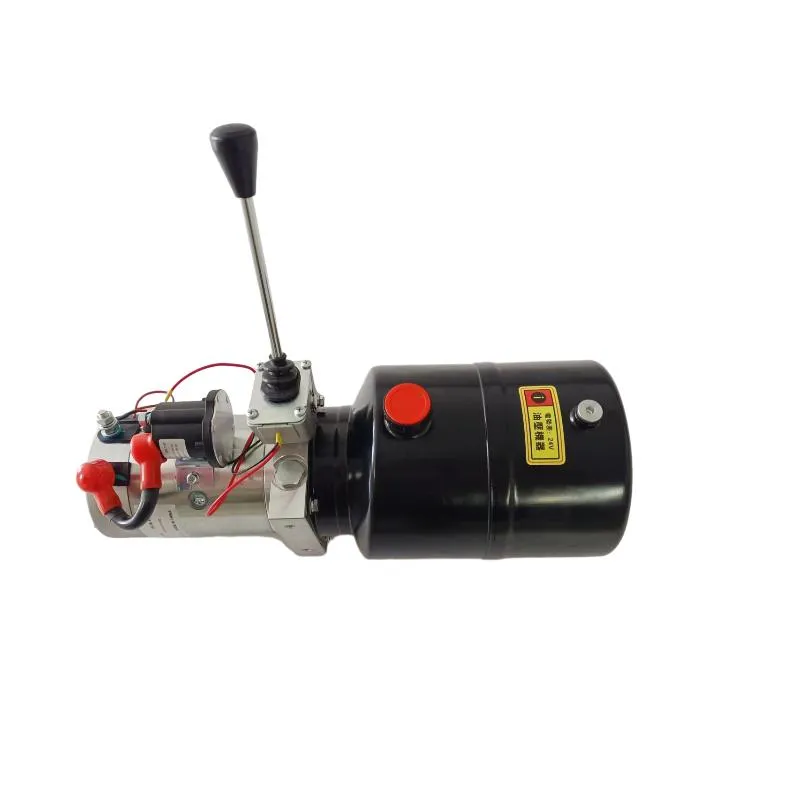Oct . 16, 2024 19:51 Back to list
Top-Quality Hydraulic Lift Cylinder for Forklifts with Exceptional Performance and Durability
Understanding High-Quality Forklift Hydraulic Lift Cylinders
Forklifts are an integral part of many industries, from warehouses to construction sites. One of the most crucial components of a forklift is its hydraulic lift cylinder. This cylinder plays a vital role in the efficiency and safety of lifting operations. In this article, we will explore the importance of high-quality forklift hydraulic lift cylinders, their components, factors to consider when purchasing, and maintenance practices to ensure longevity.
The Function of Hydraulic Lift Cylinders
Hydraulic lift cylinders are responsible for converting hydraulic energy into mechanical energy, allowing the forklift to lift and lower heavy loads. The hydraulic system uses pressurized fluid to move a piston within the cylinder, creating the force necessary to raise or lower the forks. A high-quality hydraulic lift cylinder will provide reliable performance, ensuring that the forklift operates smoothly, can handle substantial loads, and does not pose a safety risk to operators or nearby personnel.
Importance of Quality
Quality in hydraulic lift cylinders is paramount. High-quality cylinders are designed to withstand the immense pressures associated with lifting heavy loads. They are constructed from durable materials that resist wear and tear, corrosion, and fatigue. Investing in quality components not only enhances the efficiency of the forklift but also lowers the risk of mechanical failure. Failure of a hydraulic lift cylinder can lead to catastrophic accidents, damaging both goods and equipment and risking the safety of personnel.
Key Components of Hydraulic Lift Cylinders
1. Cylinder Body This is the main part of the hydraulic cylinder and is designed to contain the hydraulic fluid. A thick-walled steel or aluminum construction provides the necessary strength.
2. Piston The piston moves within the cylinder and is responsible for creating lifting force. A well-fitted piston minimizes the risk of fluid leaks and enhances efficiency.
3. Seals Seals prevent hydraulic fluid from leaking out of the cylinder while ensuring that air and contaminants do not enter. High-quality seals are essential for maintaining hydraulic system integrity.
4. Rod The rod connects the piston to the external lifting apparatus. It must be robust enough to withstand the forces exerted during lifting operations.
5. End Caps These secure the cylinder and often house the seals. Properly designed end caps prevent leaks and improve the overall durability of the cylinder.
Factors to Consider When Purchasing
When it comes to purchasing high-quality forklift hydraulic lift cylinders, several factors should be considered
high quality forklift hydraulic lift cylinder

1. Load Capacity Choose cylinders that are rated for the loads that your forklift will be lifting. Underestimating capacity can lead to cylinder failure.
2. Material Quality Look for cylinders made from high-grade materials that can withstand harsh working conditions. Consider options with anti-corrosive coatings for added protection.
3. Compatibility Ensure that the cylinders are compatible with your specific forklift model. Incorrect fit can lead to mechanical issues and safety hazards.
4. Supplier Reputation Purchase from reputable manufacturers or suppliers known for producing reliable hydraulic components. Check reviews and seek recommendations from industry peers.
5. Warranty and Support Strong warranty terms and customer support are essential. Manufacturers who stand behind their products are likely to produce high-quality components.
Maintenance for Longevity
Proper maintenance of hydraulic lift cylinders is vital to prolonging their lifespan and ensuring safe operation. Here are some best practices
1. Regular Inspections Routinely check for signs of wear, leaks, or damage. Early detection can prevent larger issues later on.
2. Fluid Checks Monitor the hydraulic fluid quality and levels. Contaminated fluid can damage seals and piston components.
3. Cleaning Keep the external surfaces clean to avoid dirt entering the hydraulic system.
4. Lubrication Ensure that moving parts are well-lubricated as per manufacturer guidelines to reduce friction and wear.
5. Professional Servicing Engage professional technicians for repairs and servicing, especially for major issues that require expertise.
Conclusion
High-quality forklift hydraulic lift cylinders are essential for ensuring safe and efficient lifting operations. By understanding their function, key components, and the importance of quality, businesses can make informed purchasing decisions. Coupled with diligent maintenance practices, these components will serve reliably, enhancing operational productivity while safeguarding the workforce. Investing in quality hydraulic lift cylinders is not merely a choice; it’s a commitment to safety and efficiency in material handling.
-
Fork Lift Power Units - Hebei Shenghan | Efficiency, Reliability
NewsJul.13,2025
-
1.5-Ton Turbocharged Cylinder-Hebei Shenghan|Hydraulic Solution,Energy Efficiency
NewsJul.13,2025
-
Auto Hoist Power Units-Hebei Shenghan|Efficiency&Industrial Lifting
NewsJul.13,2025
-
Double Acting Power Units-Hebei Shenghan|Hydraulic Solutions,Industrial Efficiency
NewsJul.13,2025
-
1.5 Ton Lifting Cylinder 70/82-40-290-535 - High-Performance Hydraulic Solution | Hebei Shenghan
NewsJul.13,2025
-
Fork Lift Power Units - Hebei Shenghan | Efficiency&Reliability
NewsJul.13,2025
